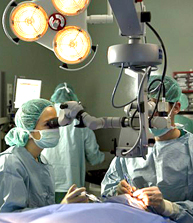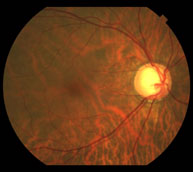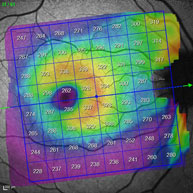Monés Carilla Jordi

Glaucoma typically involves an increase in pressure inside the eye because the aqueous humour cannot drain out, although this is not the only cause. The usual outcome of glaucoma is damage to the optic nerve, characterised by a progressive loss of fibres and morphological changes.
Between 1.5% and 2% of people aged over forty suffer from this disease and it's one of the main reasons for incurable sight loss.
High pressure inside the eye is one of the key risk factors although this is not necessarily related directly with glaucoma. Some patients still suffer from glaucoma although they have a level of pressure inside the eye that's considered normal, while others have high inner eye pressure but don't actually suffer from the disease.
A reduced area of vision tends to be one outcome of glaucoma. The first area to be affected is periphery sight. If left untreated, the area of vision gradually narrows, ultimately leading to complete loss of sight in the eye.
Appropriate treatment can avert or diminish this steady loss of vision due to glaucoma.
Open angle glaucoma
 The iris-cornea angle is normal. Progression is slow and there are no apparent symptoms but vision gradually deteriorates; that's why this kind of glaucoma is often called "the silent thief of sight".
The iris-cornea angle is normal. Progression is slow and there are no apparent symptoms but vision gradually deteriorates; that's why this kind of glaucoma is often called "the silent thief of sight".
Depending on its cause, open angle glaucoma is classified as:
- Primary. If there's no other illness causing it. Simple chronic glaucoma comes under this category, the most frequent form of the illness.
- Secondary. When it is caused by another illness.
Closed angle glaucoma

Immediate emergency treatment is required for this ophthalmological illness. This acute disorder normally occurs when the pupil dilates, in some people blocking the sponge-like tissue near the cornea and iris.
This narrows the anatomical angle formed between the eye's cornea and iris. Pressure normally increases rapidly inside the eye, leading to impaired sight, seeing rings around lights, the eyes becoming red, overly dilated pupils, intense pain, queasiness and being sick.
The Institut has highly innovative technology to explore, detect, cure and control glaucoma.
| Morning | Afternoon | |
|---|---|---|
| Monday | 8:00 - 20:00 h | - |
| Tuesday | 8:00 - 20:00 h | - |
| Wednesday | 8:00 - 20:00 h | - |
| Thursday | 8:00 - 20:00 h | - |
| Friday | 8:00 - 16:00 h | - |















